Combat ships. Cruisers. More useful than many who fought
In accordance with article 181 of the said Treaty, Germany was allowed to keep 6 battleships of the "Deutschland" or "Braunschweig" type, 6 light cruisers and 12 destroyers and destroyers each.
The allies in the Entente left the Reichsmarine, as the German navy is now called, as many as 8 cruisers. Six of them were light cruisers of the Gazelle class built in 1898-1903 (Niobe, Nymphe, Medusa, Thetis, Arcona and Amazone) and two cruisers of the Bremen class (Berlin "And" Hamburg "), laid down in 1903.
In general, these ships could be used as training ships and nothing more. All of them had a displacement of 2700-3700 tons, thanks to coal boilers, they developed a speed of no more than 20 knots and were armed with ten 105-mm guns. It is clear that the value of these ships was minimal.
The only advantage of these ships was their service life, which, if funds were available, made it possible to replace them with new ones in the near future.
And as soon as funds appeared, the Germans decided to build a new cruiser. And since the funds were not as much as they wanted, they did not particularly philosophize with the project, taking the most recent project of a light cruiser of the First World War. It was a Cologne-class light cruiser of the second series. And it was slightly modified in the light of the new products that appeared.
"Cologne" with a displacement of 5620 tons was equipped with two steam turbines with a total capacity of 31 hp, which accelerated it to 000 knots and was armed with eight 29-mm guns, three 150-mm anti-aircraft guns and four 88-mm single-tube torpedo tubes.
The new cruiser received a power plant with a capacity of 45 hp, the torpedo tubes were replaced with more modern twin-tube 000-mm, the main battery guns were decided to be installed in double-barreled towers according to a linearly elevated scheme, the number of tubes was reduced to two. As a result, the ship was laid in 533 tons of displacement.
It is clear that the laying of a single modern ship did not change anything at all and was an exclusively political act.
By the way, there were also problems with the construction site. The largest of the former state shipyards was in Danzig, which became a free city and was not part of Germany. The Admiralty in Kiel, renamed Deutsche Werke, was almost completely privatized after the partition, and could not function as a naval shipyard. So at the disposal of the Reichsmarine, only the shipyard in Wilhelmshaven remained, where the cruiser was laid down.
And then the trouble began. The ship was already under construction when the Washington and London treaties were concluded. Germany did not sign these documents, but who began to ask the Germans something there? They were simply confronted with the fact that the ship must comply with the terms of the contract, and that's it.
In general, the Germans measured everything in ordinary metric tons, and in the contracts there were British long (1,016 tons) tons. And the Germans were allowed to recount in new standards. So the displacement of the new cruiser dropped to 5280 tons, which made it possible to use the displacement reserve that fell from the sky in order to improve the ship.
But so that the Germans were not particularly happy, they were forbidden to install paired gun mounts. Say, then the new cruiser will be cooler than the Danai and Caledons of the British fleet, but this is not comme il faut. And in general, the Germans cannot use new weapons system.
So we had to abandon both the new installations and the new weapons.
The ceremonial launching of the new ship took place on January 7, 1925. The name of the ship was given by Jutta von Müller, the widow of Karl von Müller, the commander of the famous raider "Emden" built in 1908. Naturally, the new ship was named "Emden".
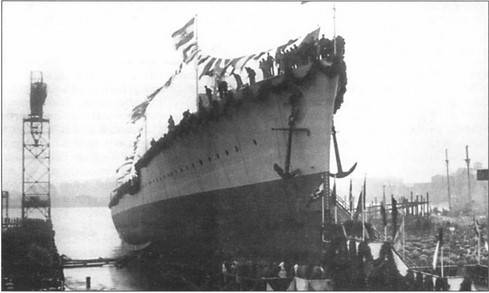
The cruiser became the hundredth warship built at Wilhelmshaven for the German fleet.
The main power plant "Emden" consisted of 10 standard naval boilers - 4 coal and 6 oil. Plus 2 Swiss Brown Boveri turbines. As a result, the power of the power plant was 46 hp.
On trials, Emden produced 29,4 knots, which was pretty decent for that time. Estimated cruising range 6 miles at a speed of 750 knots. The fuel stock was 14 tons of coal and 875 tons of oil.
The Emden was the first German ship to have turbo-gear units in its power plant.
Since everything was sad in Germany with oil, it was decided not to abandon coal-fired boilers. They were replaced with oil ones much later, during one of the modernizations. In general, it turned out quite economically, the cruising range in comparison with the "Cologne" increased by half, but everything was rather cumbersome.
Reservation
The basis of the booking was a branded German armor belt 50 mm thick, which had a length of about 125 m and a height of 2,9 m, dropping 1,3 m below the constructive waterline. The armor belt covered more than 80% of the hull. Closed the armored belt of traverses 40 mm thick.
Armored deck. It was recruited from 20 mm armor plates, and above the artillery cellars, the number of plates doubled, getting a thickness of 40 mm.
The steering gear in the stern covered an armored box with a thickness of 20 mm.
Conning tower. Traditionally good for all German ships: 100 mm walls, 20 mm roof and floor. A 20-mm communication pipe ran from it to the central post located under the armored deck.
The projectile feed shafts were also 20 mm thick. And the last thing - the shields of the guns were from the same 20-mm armor plates.
In general, not many ships could boast of such booking. Everything was quite impressive for a light cruiser.
The number of the crew is 582 people, including 26 officers and 556 sailors.
Seaworthiness. Everything is not easy here. The Germans naturally praised their ship. The British were criticized mainly for the low, "creeping" silhouettes. However, if you look at the number of miles that Emden traveled during the service, it becomes clear that the ship was quite successful.
weaponry
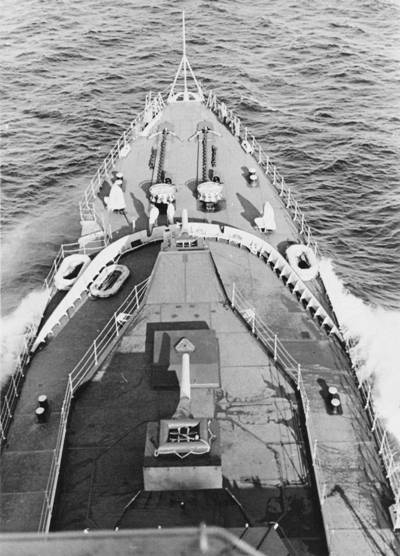
Main caliber: eight 150 mm guns in single-gun turrets. The guns were located in the same way as on the cruisers of the Kaiser fleet. Two guns (No. 2 elevated above No. 1) in the bow, two in the stern (one on the poop, one on the aft superstructure), two guns on the sides near the bow superstructure are directed towards the bow and two guns near the second pipe are directed towards the stern ...
Thus, the maximum number of guns that could participate in a salvo is six.
Attempts to improve weapons by installing paired gun mounts were made until the beginning of the war, which, in fact, put an end to all plans. The most interesting modernization project in 1940 could be the installation of four twin-gun turrets, which were developed for the Narvik-class destroyers. And the anti-aircraft armament should be reinforced with one 88-mm gun and two 37-mm machine guns. And leave a couple of onboard guns for firing with lighting shells.
However, the outbreak of the war put an end to modernization and until its end, "Emden" served with single-gun installations.
Anti-aircraft armament consisted of three 88-mm Flak L / 45 anti-aircraft guns of the 1913 model.
The guns had a good rate of fire (up to 15 rounds per minute), an altitude reach of 9 m and a firing range of 150 m. The muzzle velocity was 14 m / s. The ammunition load consisted of 100 rounds.
Anti-aircraft guns were located on the superstructure behind the chimneys.
The mine-torpedo armament consisted of two twin-tube 500-mm torpedo tubes with 12 torpedo ammunition. In 1934, the devices were replaced by 533 mm.
The cruiser could take on board 120 min.
Modernization. In general, "Emden" became the most modernized ship of the Kriegsmarine in the entire short history... The upgrades ranged from purely cosmetic to substantial.
In 1933-1934 4 coal boilers were replaced with oil ones. At the same time, the 500-mm torpedo tubes were replaced with 533-mm ones.
In 1937, the anti-aircraft armament was reinforced with 6 20-mm machine guns and two 37-mm machine guns.
In 1940, two quadruple 20-mm assault rifles appeared in experimental installations - prototypes of the famous "firling". They were installed side by side on the superstructure deck in the mainmast area. At the same time, the MES demagnetizer was installed.
In 1941, when transferring to a training ship, all machine guns were removed from Emden, except for four single-barreled 20-mm. But the training ship did not need such protection.
At the end of 1942, all the main guns were replaced with new ones, and two 20-mm firling guns were installed again. FuMO 21 radar installed.
At the beginning of 1943, two more "firlings" and two 20-mm single-barreled assault rifles were installed.
In August 1944, instead of 88-mm guns, they installed three universal 105-mm guns, two 40-mm Bofors assault rifles, 20 20-mm assault rifles (2 x 4 and 6 x 2).
Service history
On October 15, 1925, the flag was solemnly raised on the Emden, and the cruiser entered service. After passing the tests, in 1926, the cruiser, having taken on board about a hundred cadets of the academy, set off on a round-the-world voyage.
On March 15, 1927, the ship arrived at the North Killing Island (Cocos Islands), to the place where the TOT "Emden" was sunk.
In 1928, the Emden made a second round the world voyage. And in total, the cruiser as a training ship made ten long voyages, of which 6 became around the world.
The start of the Second World War, the oldest of the German cruisers (by that time), met, oddly enough, very cheerfully. Simultaneously with the transfer of the ship from the jurisdiction of the Training Inspectorate to the Reconnaissance Forces, an order came to take on board mines and lay minefields.
On 3 September, Emden was hit by the Royal Air Force. 4 Blenheims bombed. The bombs went so-so, but one British plane, led by flying lieutenant Emden (irony of fate!) Was shot down and crashed into the side of the cruiser.
The damage was not very serious, and after a week of repairs, the cruiser continued its service.
The second military operation was the Weserubung, that is, the occupation of Norway. "Emden" acted in the same detachment with "Luttsov" and "Blucher". As a result, the Norwegians sank the Blucher, damaged the Lyuttsov, but the Emden, thanks to the skillful actions of its crew, did not receive any damage.
The landing force was landed, even if it failed to complete the task of capturing Oslo, the airborne assault coped with it.
After the capture of Oslo, the Emden was again transferred to training ships.
The next combat use is participation in the "Baltic Fleet" under the command of Vice Admiral Tsiliaks. The "Southern Group" consisting of the cruiser "Emden" and three destroyers (T-7, T-8 and T-11) supported the German forces seizing the island of Ezel.
"Emden" entered the fight against Soviet batteries of 180-mm (No. 315) and 130-mm (No. 25a) guns. The Soviet artillerymen drove away the destroyers farther from the sea with precise fire, and 4 G-5 torpedo boats were thrown at the Emden.
One boat (TKA-83) was destroyed by the fire of German ships, torpedoes passed by. Then there was a sea anecdote on the topic "Who will lie the coolest."
The Germans reported on the sinking of two boats, as the gunners of the Emden and Leipzig claimed to sink the TKA-83. The number of shells consumed by the German cruisers (Leipzig - 153, Emden - 178) per torpedo boat was an overkill.
But our boatmen calmly reported about the sinking of two destroyers and damage to the cruiser and destroyer!
True, the sunk and damaged ships continued shelling the Soviet positions the next day until the ammunition was completely used up. After that, "Emden" went to Gotenhafen and on this the war with the USSR ended for the cruiser.
Again at the "Emden" began service as a training ship, but at the end of 1942 it was again decided to involve the ship in combat operations (the Germans were actively losing ships), but the defeat of the Kriegsmarine in the "New Year's battle" abruptly changed all plans.
Although the Emden was not dismantled for metal (according to the original plan), the upgrades were canceled and the cruiser remained a training ship.
Until September 1944, "Emden" was a training ship, but due to the deterioration of the situation, it was again transferred to the ships of the first line. The cruiser was again given responsibility for laying mines in the Skagerrak. "Emden" displayed over 300 minutes.
Further, the cruiser was transferred to the north, where he accompanied the convoys in the Oslofjord and provided air defense.
Then the cruiser again found herself in the Baltic, in Konigsberg. On repair. The repair, however, was not completed, because Soviet troops approached Konigsberg. With the vehicles in a semi-disassembled state, on one turbine, with dismantled weapons, the cruiser was able to leave for Gotenhafen (Gdynia), where the turbine was assembled, and the artillery was put back in place.
Many different cargoes were taken on board the Emden, including the coffins of the President of Weimar Germany, Field Marshal P. Hindenburg and his wife. In addition, about a thousand refugees boarded on board.
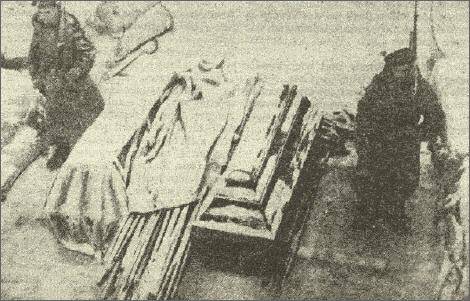
Guard at the coffins of Hindenburg and his wife
On February 1, 1945, the Emden crawled out of Konigsberg at a speed of 10 knots and made the transition to Kiel, at the Deutsche Werke shipyard, where it got up for repairs. However, the ship was not destined to return to service from repair.
On March 2, 1945, 4 bombs hit the Emden. The bombs were of small caliber, up to 100 kg, so the defense withstood, but a fire broke out. On April 3, a 227 kg bomb hit the ship, which pierced the deck and exploded in the boiler room, smashing everything there.
On the night of April 9-10, British heavy bombers dropped 2 tons of bombs on Kiel. "Admiral Scheer" rolled over and sank, "Admiral Hipper" turned into a heap of scrap metal. The Emden's stern was turned.
After inspection, the ship was taken to Heikendorf Bay, where it was run aground, after having laid explosive charges in the engine and boiler rooms. On May 3, 1945, the charges were put into action, putting the final point in the fate of the ship.
The remains of the ship were dismantled for metal after the war, in 1949-1950.
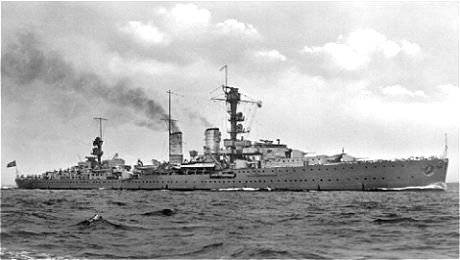
An interesting fate. The first large ship of new Germany lived significantly longer than those built after it. Yes, its construction proceeded in difficult conditions, the construction was watched by the victorious allies, who did not allow the ship to be built in accordance with modern capabilities.
Because "Emden" is not only outdated at the shipyard, it was already laid down out of date. And therefore the best role for him in the navy is the role of a training ship.
Nevertheless, the contribution of "Emden" to the development of the fleet was enormous. A new ship of this class is the confidence that the German shipbuilding industry is alive. They found the money, thus saving the personnel, both in design and production. Well, the number of sailors that Emden trained in its campaigns - it made it possible to staff other ships of the Kriegsmarine with trained personnel.
Of course, the ship was archaic by the start of World War II. It was not for nothing that it was called “the last German cruiser of the First World War”. Fair enough. Yes, the artillery was at that level.
But nevertheless, despite the fact that in 1927 the Emden was an outdated ship, its safety margin ensured long-term operation, which entailed a long service as a training ship.
You can criticize the Germans who rushed to build a ship without forming a naval doctrine, without analyzing the results of the First World War. But they had such a time. And the Emden has become a kind of symbol of the revival of the German navy.
And, by the way, against the background of the old troughs that served then, it looked quite decent. And having prepared so many officers for the Kriegsmarine, it is safe to say that the Emden fully worked out every pfennig spent on its construction.
And he became an interesting example when a ship in peacetime proved to be much more useful than in battle.
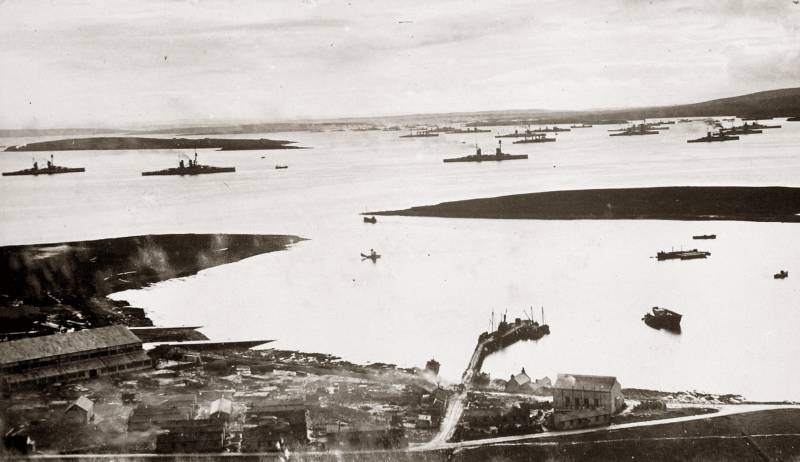
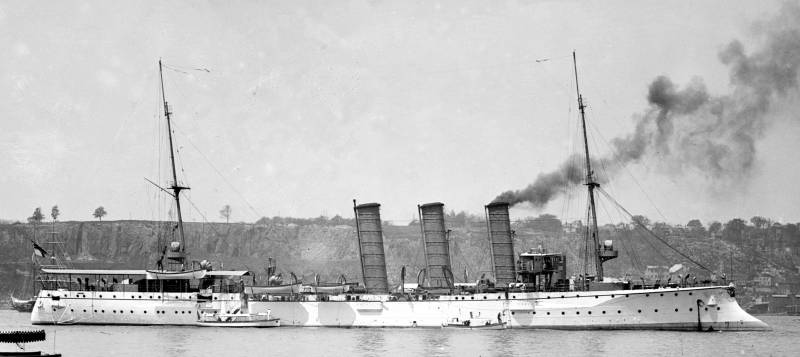
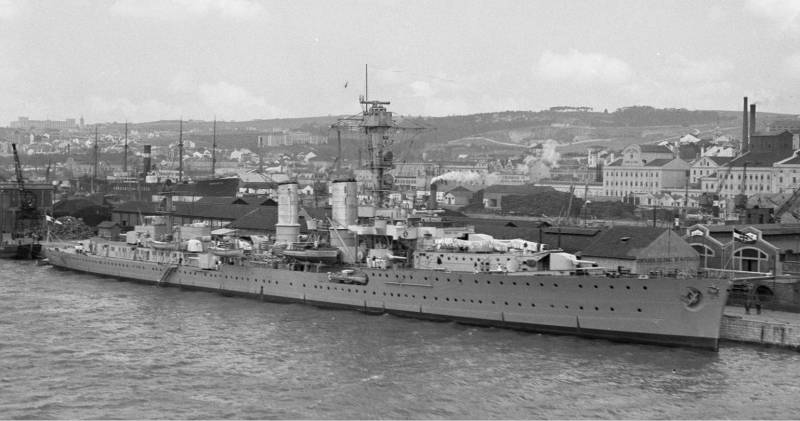
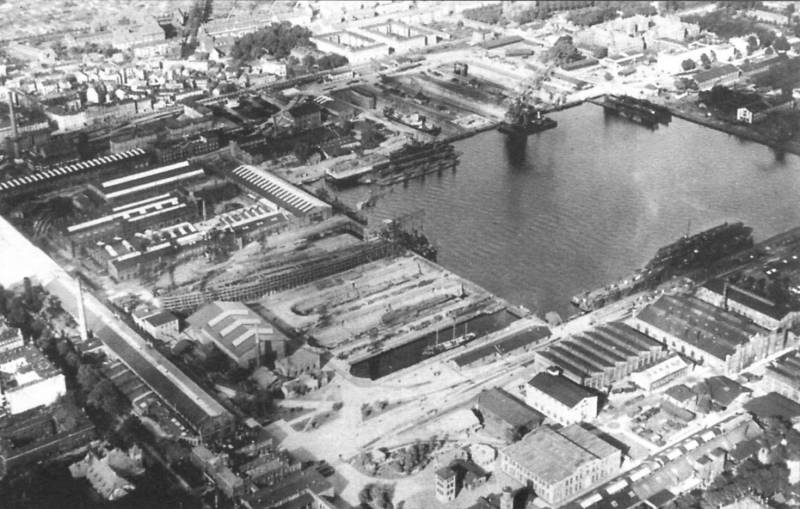
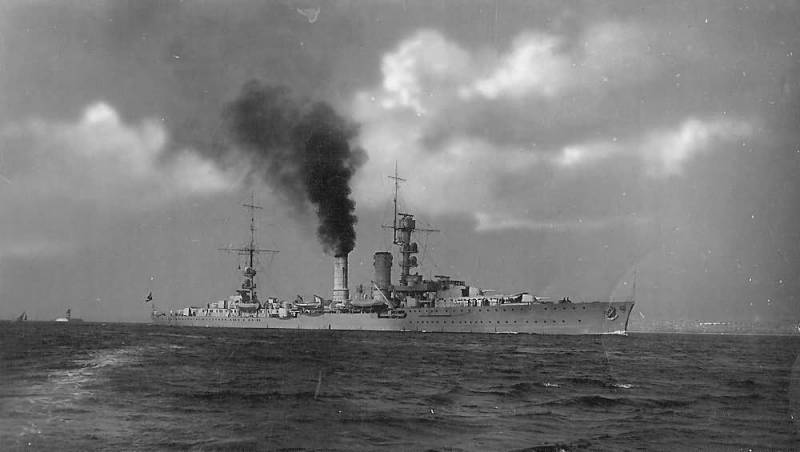
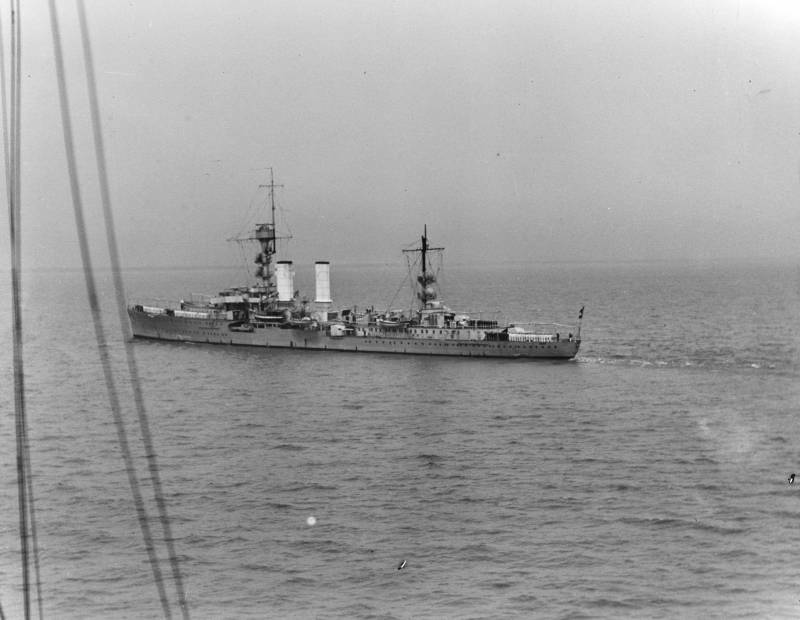
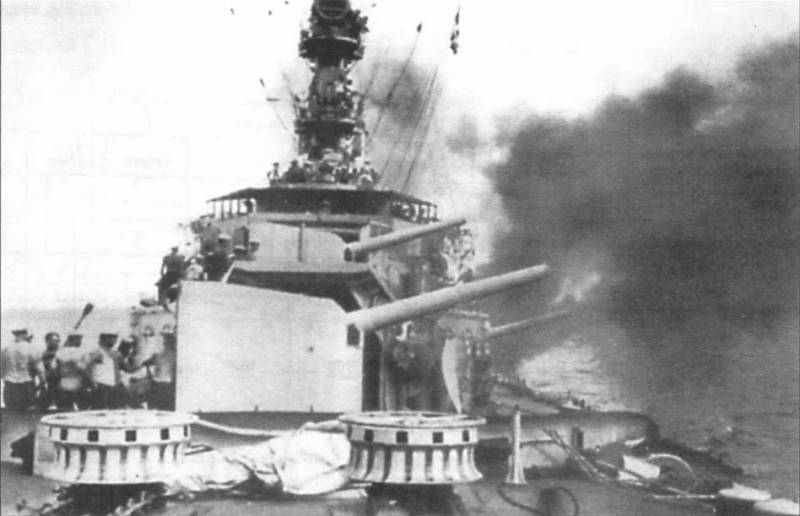
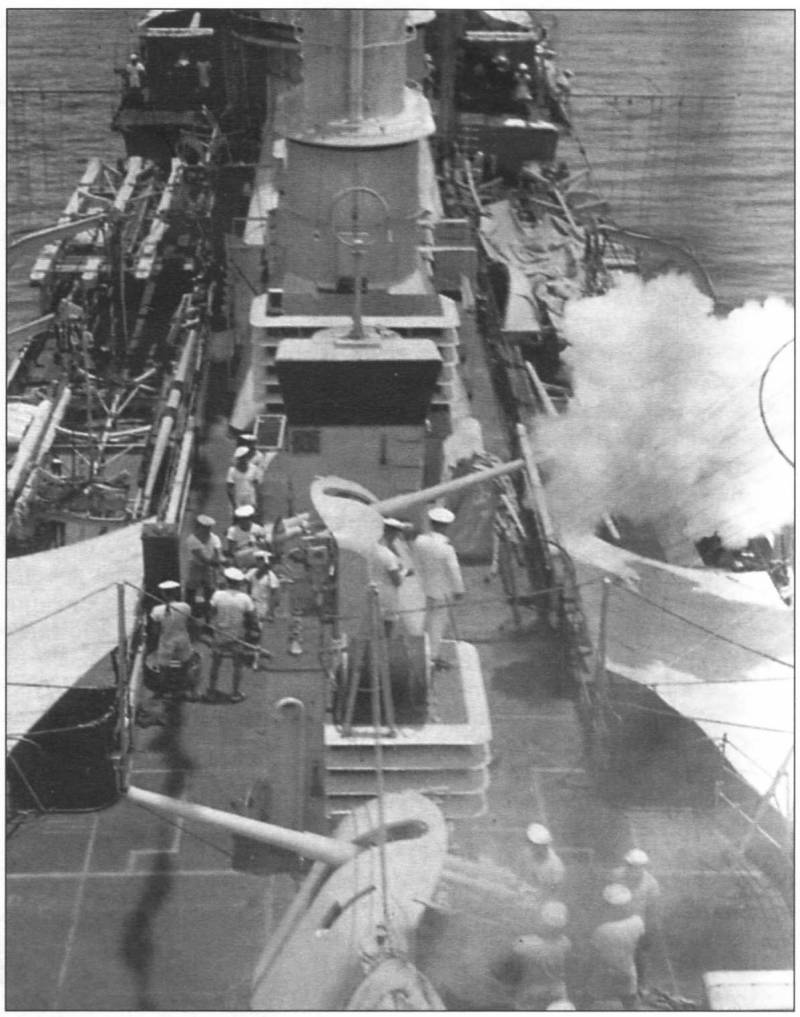
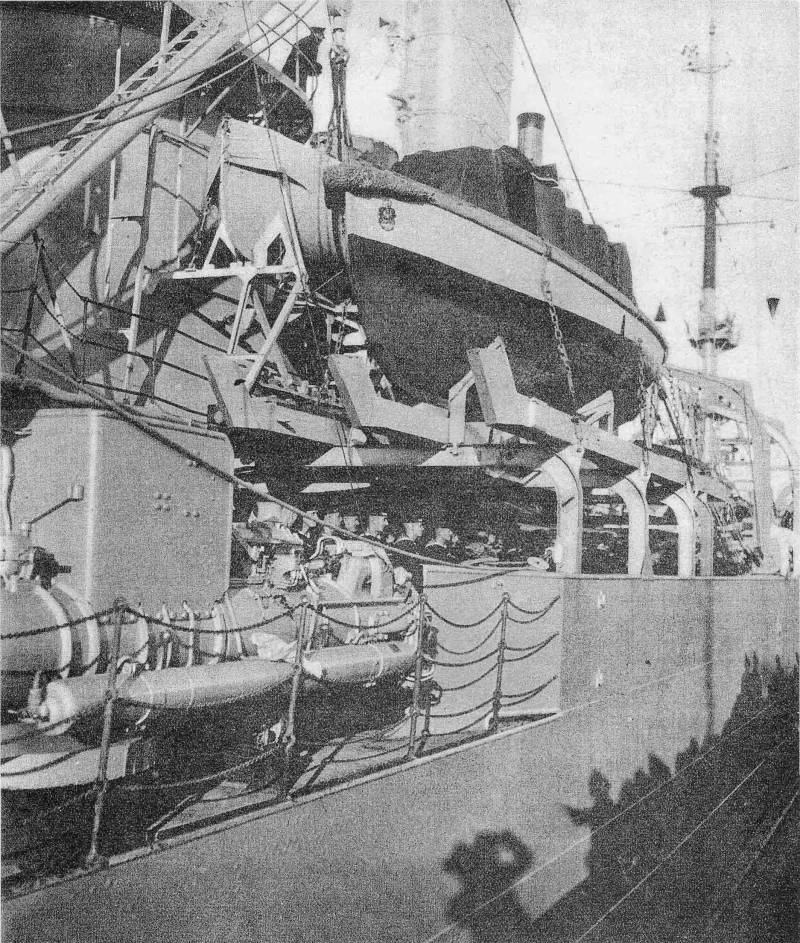
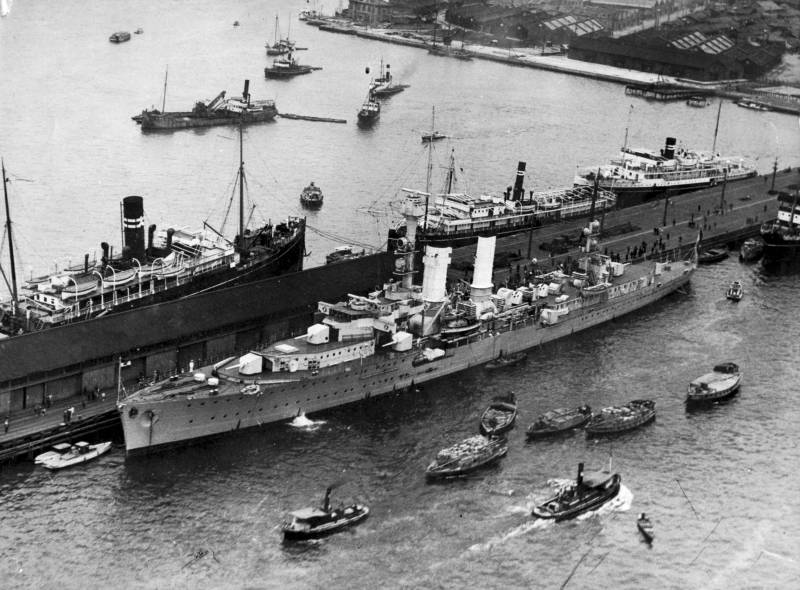
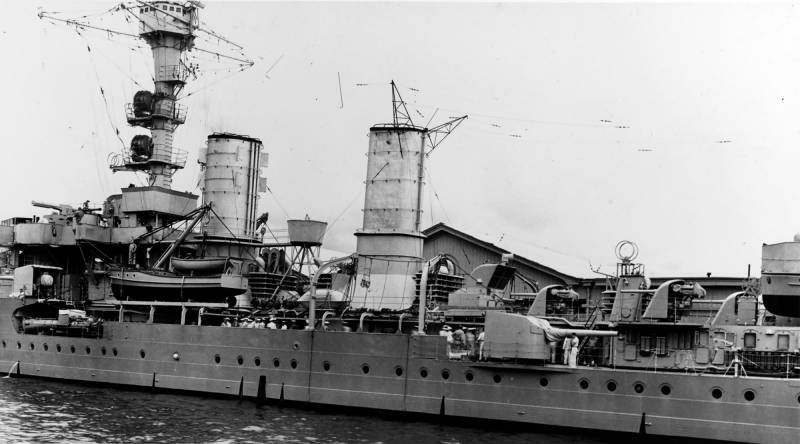
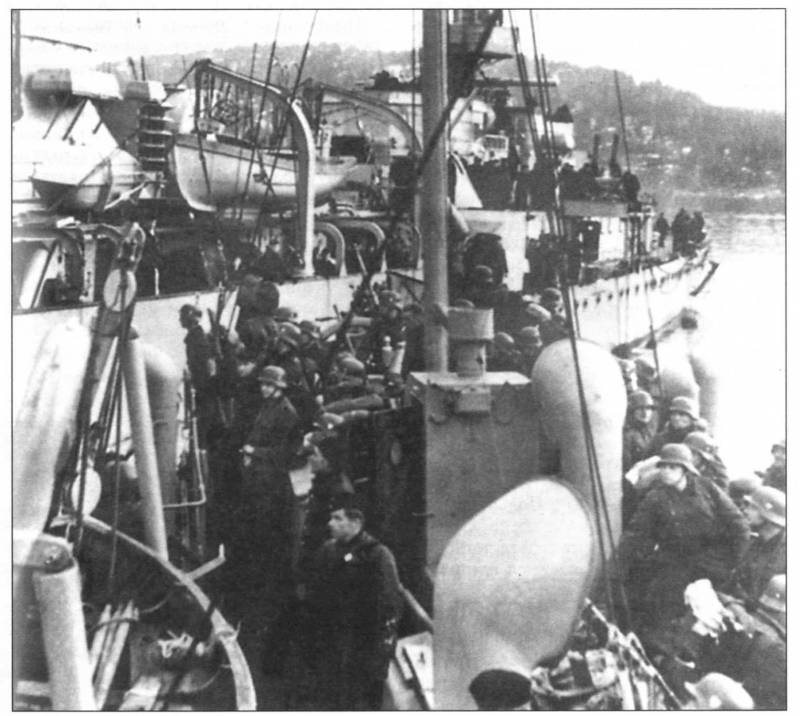
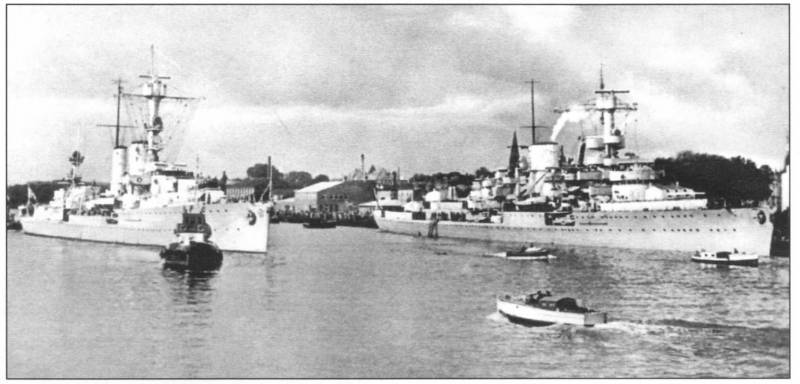
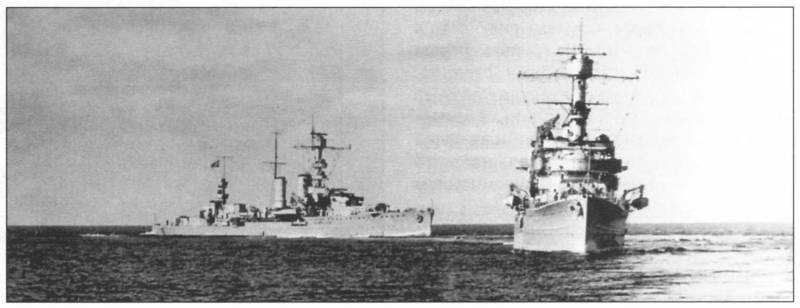
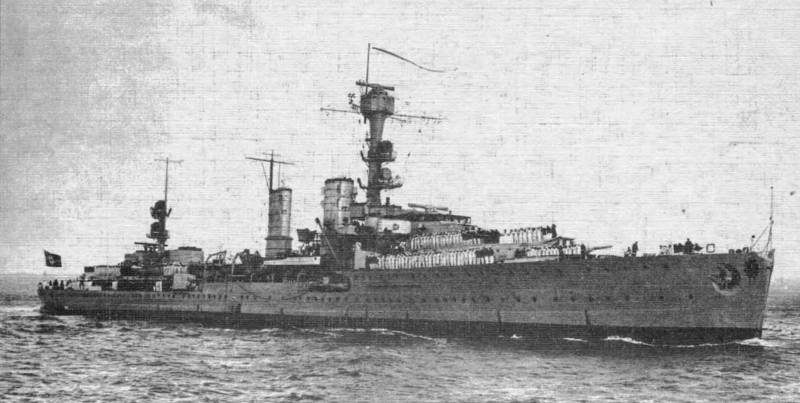
Information